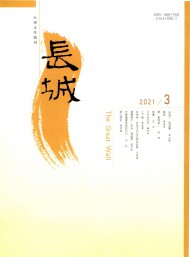长城导游词十篇
时间:2023-03-21 06:32:50

长城导游词篇1
看,这就是长城!它像一条长龙在崇山峻岭之间蜿蜒盘旋。你们知道这段长城有多长吗?猜对的,重重有赏!对了,这段长城有一万三千多里,你们想一想,这一段长城就有13000多里了,这条长城分布在9个省、市、自治区,你们说它有多长?肯定是很长的。国父孙中山先生参观完长城后,评价道:"中国最有名之工程者,万里长城也。"
各位,看到这两个口了吗,上面的这个长方型的是t望口,下面这个正方型的是射口。
这座长城每隔300多米就会有一座屯兵的堡垒,上面是烽火台,打仗的时候,城台之间可以互相呼应。周幽王曾在这演过一出"烽火戏诸侯"的闹剧。
大家一定都听过《孟姜女哭长城》这个典故吧!仔细读这个故事,就会知道以前的劳动人民付出了他们的血汗和智慧,才建筑出了这前不见头、后不见尾的万里长城!
现在大家可以自由活动,30分钟后到这儿来集合,祝大家玩得开心、玩得尽兴、玩得满足。对了给大家提个醒,不要乱丢垃圾,乱涂乱画,保护环境,人人有责!
今天,大家都玩得很高兴吧!感谢大家的合作与配合,希望大家下次再来这伟大的奇迹——长城游玩。
长城导游词450字(二)
游客朋友们,大家好!我是你们的导游王新茜。接下来由我带领大家去世界文化遗产----长城游玩。还请游客朋友们自觉保持这里的卫生。
请游客朋友们听听我介绍的长城—长城是中华文明的瑰宝,是世界文化遗产之一,也是与埃及金字塔齐名的建筑,还是人类的奇迹。在遥远的两千多年前,是劳动人民以血肉之躯修筑了万里长城。长城是中国人民智慧的结晶,也是中华民族的象征。听完我的介绍,游客朋友们请跟着我去游览长城。
从北京出发,经过一百多里就可以来到长城脚下。这一段长城是修筑在八达岭上的,高大坚固,全是用笨重的条石和方方的城砖筑成的。城墙顶上铺的是城砖,整整齐齐,五六匹马都可以并行。城墙外有两米多高的成排的垛子,每个垛子上都有t望口和射口。城墙顶上每隔三百多米就有一座城台,是用来屯兵的,城台之间还可以互相呼应。
长城导游词篇2
《长城》导游词
池宇豪
各位先生,女士们,大家好:
我是你们今天导游池宇豪。今天我带大家来到长城参观游览。
八达岭长城是长城保存的最完整的一段。城墙高大坚固,是用巨大的条石和方砖筑成的,每一块条石有两三千斤重,当时没有汽车,没有火车,没有起重机,单靠无数的手无数的肩膀,抬上这陡峭的山岭。到现在为止,这仍然还是个谜。城墙顶上铺着方砖,十分平整。五六匹马可以并行,城墙的外沿有两米多高的垛子,垛子上有嘹望口和射口,供嘹望和射击用。城墙顶上,每隔三百多米就有一座方形大城台,是屯兵的堡垒。打仗的时候可以互相呼应。
长城上有许多美丽的传说:秦朝时,范杞梁被抓到北方修筑长城,其妻孟姜女带着寒衣千里寻夫。到长城脚下后,不但未找到丈夫,反而被秦始皇垂涎。孟姜女终日痛哭,终于将长城哭倒,露出丈夫尸骨。百姓借此传说斥责了暴君对人民的残酷奴役,统治者借此传说宣扬了礼教中的“贞烈”,因此流传千古,如今山海关外凤凰山上仍保存有明代重修的姜女庙。
毛泽东说过一句名流千古的诗句“不到长城非好汉”,今天我们也去登长城。体验做好汉的滋味吧。
长城导游词篇3
各位游客:
大家好!欢迎大家到八达岭景区观光旅游。今天有我陈导游陪同大家一起参观,希望各位能在八达岭度过愉快的一天。
游客们,我们现在来到了一条"长龙"的面前,它就是-长城。从东头的山海关到西头的嘉峪关,有一万三千多里长呢!你们现在听了是不是目瞪口呆了?爬上长城你们会更大吃一惊,想去吗?那就跟我Let,s go!
亲爱的游客,现在我们来到了"龙"的背上,这条龙是用巨大的城砖和条石筑成的,它的背十分平整,像很宽的马路,五六匹马都能并行。你们看,城墙外沿有两米多高成排的垛子,垛子上有方形的t望口和射口,是供t望和射击用的。古时候,国家之间打仗时,我们就站在"龙"的背上。砰 啪啪"把敌人打的落花流水。
游客们,你们可以轻轻的抚摸这龙的龙磷,不过,为了保护长城不被破坏,你们千万不要用刀刻!要做一个文明的游客。
下面就是烽火台,看到烽火台,再给大家讲一个故事,《烽火戏诸侯》,周朝有个国君叫周幽王,他有一个美女叫褒似,她脾气很怪,总是不笑,幽王就想办法。于是他点着了求救信号,结果引的诸侯白来一趟,可褒姒却哈哈大笑,幽王也很开心。可是,真有敌人来进攻的时候,幽王点着了烽火,却不见人来,幽王就被杀死了。
时间如流水,一眨眼大家就要再见了,走之前我告诉大家我们公司名称"****旅游集团",以后要旅游找我哦!
长城旅游导游词400字(二)
各位游客好!我姓林,叫我林导游,今天去的景点叫长城,希望大家会喜欢这个地方。 现在我给你们介绍一下长城,长城1987年12月被列为世界文化遗产,2007年7月7日成为世界新七大奇迹之一。长城从东边的山海关到西边的嘉峪关,共有一万多千米,你们肯定走不到尾的。长城是用整齐的方砖和条石建筑而成的。城墙顶上铺着方砖十分整齐,像宽阔的马路,五六匹马可以共行。城墙外沿有两三米的成排垛子,垛子有方形的t望口和射口,提供t望和射击用。城墙顶上,每一段距离就有一座方形的城台,是屯兵的好帮手。
长城导游词篇4
hello,大家好,我是你们的导游,我姓石,你们可以叫我千千,俗话说;不到长城非好汉。今天,我就与大家一起游览世界文化遗产——长城。在这里我祝大家旅途愉快。
长城十分的长,长的就像是一条长龙。静静地我在崇山峻岭之间,保卫者国家的大好山河。城墙顶上铺着方砖,十分平整,像很宽的马路,五六匹马可以并行。城墙外沿有高达两米多高的成排的垛子,供了望和射击用。长城怪不得是世界文化遗产呢。
现在我给大家讲个故事,故事是这样的;
古时候,秦国有一位农家女叫孟姜女,她的丈夫在她们成亲之日被几个官兵抓走了。一年之后,她的丈夫没联络,孟姜女决定去找他。当她知道自己的丈夫被抓去修长城以后,她立马伤心大哭起来,孟姜女泪如泉,声如雷。她哭到哪,长城就塌到哪,倒塌的长城足有八百里长,秦始皇知道后他立马去见孟姜女询问理由。秦始皇一见到孟姜女就被她的美迷住了。孟姜女看穿了他的心思,说:"只要你肯和我去找我丈夫的尸体,我就做你的妃子。"秦始皇答应了,当孟姜女找到他丈夫的尸体时,夙愿以偿,跳海自尽了。
好了,长城的游览到此结束,希望你有机会再到长城来玩。
长城的导游词300字(二)
大家好,我是今天的导游,我姓陈,大家可以叫我陈导游,今天大家游览的地方是长城,俗话说得好:"不到长城非好汉。"今天,就让我们登上长城做好汉吧!
北京长城如同一条条沉睡的金色的巨龙,静卧在崇山峻岭之间,保卫着祖国伟大的毛主席,这天安门广场,就像龙身上的一片片鳞甲;这一个一个巨大的堡垒,好像龙身上的麟,秦统一六国以后,秦始皇发动一百八十万民工,将各个长城连接成了万里长城。
中间还有一个故事:古时候是用泥和热水来粘成的,现在我们面前的就是好汉坡了,登上了它们就是好汉了!我们扶好扶手,我们向前吧!
长城导游词篇5
远远望去,长城像一条巨大无比的长龙。近看,长城一眼望不到头。站在长城上看,一座座烽火台屹立在长城上,像一个永远不会倒的不倒翁。接下来是小编为大家整理的关于长城的导游词作文500字,方便大家阅读与鉴赏!
长城的导游词作文500字1游客们,我们现在看见的万里长城。远看长城它像一条长龙,在崇山峻岭之间蜿蜒盘旋。从东头的山海关到西头的嘉峪关,有一万三千多里。
在春秋战国时期,每个地方的人民为了防御敌人来侵略自己的领土就建筑了一段段长城,只有到了秦始皇统领中国的时候才把一段段的长城连接前不见头后不见尾的万里长城。我们站的这段长城是修筑在八达岭上,高大坚固,是巨大的条石和城砖筑成的。城墙顶上铺着方砖十分平整,像很宽的马路,五六匹马可以并行。城墙外沿着两米多高的成排的垛子,垛子上有方形的了望口和射口,供了望和射击用。
长城还有个动人的传说《孟姜女哭长城》据说孟姜女的丈夫范喜良被秦始皇派去修筑长城,但是很久的时候没有回去,孟姜女决定去找她的丈夫范喜良,到长城脚下却没有看见丈夫就问那些工人,工人却说范喜良死了,被埋在了长城下,孟姜女伤透了心就在长城脚下哭的天昏地暗,连长城都被感动了,最后她哭了三天三夜把长城都给哭倒了,她的丈夫范喜良的尸体现出来了。
从这个故事我们能看出来古代修筑长城的劳动人民是多么的辛苦。游客们,请你们细细游赏,一定要注意安全,不要乱涂乱画,随便仍纸吐唾沫。要珍惜古代劳动人民的成果。
长城的导游词作文500字2尊敬的各位游客,你们知道宇航员们第一眼看到离我们的中国的什么吗?它就是:我们将要游览的是长城,他东起山海关,西至嘉峪关,有一万三千多里!是我国重点保护单位,已经列入《世界遗产名录》。
这一段长城是明长城,修筑在八达岭上,高大坚固,是用巨大的条石和城砖筑成,大家可以看到这路很宽五六匹马可以并行,城墙外沿有两米多高的垛子,垛子上有方形的缭望口和射口。供射击用。城墙顶上每隔三百米有一座方形的城台。是屯兵的保垒,打仗时城台之间能互相呼应。
这长城很长,在长城上有许多人的生命。也是古代劳动人民用汗水和智慧凝结成的。为什么这长城几百年不倒呢?那就是因为这是古代劳动人民用糯米和水泥凝结成的。
各位朋友,我的介绍就到这里。俗话说:百闻不如一见。大家要对长城有一个深刻的了解还需要根据自己的兴趣亲身投入到长城的环抱里,沿着历史文化的足迹慢慢去游览,仔细去观赏。不过不要在文物上乱添乱画,还注意要保护环境,从自已做起噢!
长城的导游词作文500字3各位先生,女士们,大家好:
我是你们今天导游池宇豪。今天我带大家来到长城参观游览。
八达岭长城是长城保存的最完整的一段。城墙高大坚固,是用巨大的条石和方砖筑成的,每一块条石有两三千斤重,当时没有汽车,没有火车,没有起重机,单靠无数的手无数的肩膀,抬上这陡峭的山岭。到现在为止,这仍然还是个谜。城墙顶上铺着方砖,十分平整。五六匹马可以并行,城墙的外沿有两米多高的垛子,垛子上有嘹望口和射口,供嘹望和射击用。城墙顶上,每隔三百多米就有一座方形大城台,是屯兵的堡垒。打仗的时候可以互相呼应。
长城上有许多美丽的传说:秦朝时,范杞梁被抓到北方修筑长城,其妻孟姜女带着寒衣千里寻夫。到长城脚下后,不但未找到丈夫,反而被秦始皇垂涎。孟姜女终日痛哭,终于将长城哭倒,露出丈夫尸骨。百姓借此传说斥责了暴君对人民的残酷奴役,统治者借此传说宣扬了礼教中的“贞烈”,因此流传千古,如今山海关外凤凰山上仍保存有明代重修的姜女庙。
毛爷爷说过一句名流千古的诗句“不到长城非好汉”,今天我们也去登长城。体验做好汉的滋味吧。
这次的游览结束了,祝大家旅游快乐。
长城的导游词作文500字4大家好!我是你们的导游__x。大家在游览长城时,请不要再城墙上乱涂乱画,不能乱扔垃圾,一定要做一个文明游客。
现在我们已经来到了长城。看,这一段长城修筑在八达岭上,高大坚固,是用巨大的条石和城砖筑成的。城墙顶上铺着方砖,十分平整,是不是像很宽的马路呢?城墙外沿有两米多高的成排的垛子,垛子上有方形的`?望口和射击口,供?望和射击用。请大家看,城墙顶上每隔三百多米就有一座方形的城台,那就是屯兵的堡垒。打仗的时候,城台之间可以互相呼应。
大家站在长城上,踏着脚下的方砖,扶着墙上的条石,肯定能想起古代修筑长城的劳动人民来。你们看着数不清的条石,一块就有两三千斤重。那时没有火车、汽车,没有起重机,就靠着无数的肩膀、无数的手,一步一步地抬上这陡峭的山岭。大家想一想,多少劳动人民的血汗和智慧,才凝结这前不见头、后不见尾的长城呀!
这样气魄雄伟的工程,在世界历史上是一个伟大大的奇迹,它是中华民族勤劳和智慧的象征,是华夏儿女的骄傲。
好了,今天的游览就到这里,欢迎大家再来游览长城。
长城的导游词作文500字5尊敬的游客,大家好,我是一名小小导游员,我叫李晓宇。今天,由我带着大家游长城,由于长城是世界文化遗产之一,也是国家 4A级建筑,游览时请大家保持它的清洁。
现在,我们来到了八达岭长城,这段八达岭长城位于北京延庆,是明长城最具代表性的一段,居庸关前哨,海拔高度1015米,地势险要,历来是兵家必争之地,是明代重要的军事关隘和首都北京的重要屏障。登上这里的长城,居高临下,尽览崇山峻岭的壮丽景色。迄今为止,已有包括尼克松、撒切尔夫人到此游览,八达岭景区以其宏伟的景观,完善的设施和深厚的文化历史内涵而著称于世。史称天下九塞之一,是万里长城的精华,在明长城中,独具代表性。
长城导游词篇6
尊敬的游客们,您们好,我是你们的导游——***.今天我要带你们去一处世界遗产——长城。在去长城之前,我先提几点注意事项:1、不可以在城墙上乱涂乱画;2、不可以随地吐痰;3不可以大声喧哗。好了,现在就跟我一起出发吧!
游客们,注意了!我们现在来到了长城脚下,我来介绍一下长城的结构吧!这段长城修建在八达岭上,高大坚固,是用巨大的条石和方砖筑成的。城墙上铺着方砖,十分平整,像很宽的马路。你们看!那么宽,五六匹马都可以并行了。城墙外沿有两米多高的成排的垛子,垛子上有方形的望口和射口,供了望和射击用。城墙顶上,每隔三百米就有一座方形的城台,是屯兵的堡垒。打仗的时候,城台之间就可以互相呼应了。
游客们,现在我们感受一下,站在长城上,踏着脚下的方砖,扶着墙上的条石,是不是很自然得想起古代修筑长城的劳动人民来呢?我们看一下,这数不清的条石,一块都有两三千斤重了;想一下,那时侯没有火车、汽车,没有起重机,就靠着无数的肩膀无数的手,一步一步地抬上这陡峭的山岭,那真是一个奇迹啊!多少劳动人民的血汗和智慧,才凝结成这前不见头、后不见尾的万里长城!
游客们,今天我们就抱着"不到长城非好汉"这句话登上了长城。这次的旅游结束了,希望下次我还能做你们的导游!
四年级长城导游词400字(二)
各位游客朋友们,大家好,欢迎来到长城!毛泽东毛主席曾说过:"不到长城非好汉,屈指行程二万。"今天由我带领大家去参观长城!
在参观之前,我想提醒大家:1.注意安全。2.不要掉队。3.不要乱扔垃圾。4.不要在长城上乱涂乱画。
长城又被誉为"世界七大奇迹"之一。它在崇山峻岭之间蜿蜒盘旋。从东头的山海关到西头的嘉峪关,有一万三千多里。
长城导游词篇7
《长城》导游词
池宇豪
各位先生,女士们,大家好:
我是你们今天导游池宇豪。今天我带大家来到长城参观游览。
八达岭长城是长城保存的最完整的一段。城墙高大坚固,是用巨大的条石和方砖筑成的,每一块条石有两三千斤重,当时没有汽车,没有火车,没有起重机,单靠无数的手无数的肩膀,抬上这陡峭的山岭。到现在为止,这仍然还是个谜。城墙顶上铺着方砖,十分平整。五六匹马可以并行,城墙的外沿有两米多高的垛子,垛子上有嘹望口和射口,供嘹望和射击用。城墙顶上,每隔三百多米就有一座方形大城台,是屯兵的堡垒。打仗的时候可以互相呼应。
长城上有许多美丽的传说:秦朝时,范杞梁被抓到北方修筑长城,其妻孟姜女带着寒衣千里寻夫。到长城脚下后,不但未找到丈夫,反而被秦始皇垂涎。孟姜女终日痛哭,终于将长城哭倒,露出丈夫尸骨。百姓借此传说斥责了暴君对人民的残酷奴役,统治者借此传说宣扬了礼教中的“贞烈”,因此流传千古,如今山海关外凤凰山上仍保存有明代重修的姜女庙。
说过一句名流千古的诗句“不到长城非好汉”,今天我们也去登长城。体验做好汉的滋味吧。
长城导游词篇8
师的一封信,我的理想,幸福是什么,给校长的一封建议小长城导游词已
娇艳的朝阳,已从东边群山背后跳了出来,万屡红霞四溢,和山谷中缓缓升腾的晨霭交融,变幻着五光十色的光环。长城导游词已
最早出现的启明星,在这深蓝色的天幕上闪烁起来了。它是那么大,那么亮,整个广漠的天幕上只有它一个在那里放射着令人注目的光辉,像一盏悬挂在高空的明灯。青蛙碧绿的身体上布满了墨绿色的斑点,白白的大肚子像是充过了气,一鼓一鼓的。
亮晶晶的春雨,像一群天真烂漫的娃娃,在高空中云集,嬉戏而下,咿咿呀呀,欢蹦乱跳地扑进大地母亲的怀抱。缫丝姑娘迥然不同:蓝布棉袄,黑粗呢短大衣,草绿色长裤,脖子上的纱巾是白的,扎小辫的头绳是根黑毛线。的机器人,给老师的毕业赠言,
长城导游词篇9
长城英文导游词
The Great Wall
The Great Wall, like the Pyramids of Egypt, the Taj Mahal(1) in India and the Hanging Garden of Babylon(2), is one of the great wonders of the world. Starting out in the east on the banks of the Yalu River in Liaoning Province, the Wall stretches westwards for 12,700 kilometers to Jiayuguan in the Gobi desert, thus known as the Ten Thousand Li Wall in China. The Wall climbs up and down, twists and turns along the ridges of the Yanshan and Yinshan Mountain Chains through five provinces-Liaoning, Hebei, Shanxi, Shaanxi, and Gansu--and two autonomous regions--Ningxia and Inner Mongolia, binding the northern China together.
Historical records trace the construction of the origin of the Wall to defensive fortification back to the year 656 B.C. during the reign of King Cheng of the States of Chu. Its construction continued throughout the Warring States period in the fifth Century B.C. when ducal states Yan, Zhao, Wei, and Qin were frequently plundered by the nomadic peoples living north of the Yinshan and Yanshan mountain ranges. Walls, then, were built separately by these ducal states to ward off such harassments. Later in 221 B.C., when Qin conquered the other states and unified China, Emperor Qinshihuang ordered the connection of these individual walls and further extensions to form the basis of the present great wall. As a matter of fact, a separate outer wall was constructed north of the Yinshan range in the Han Dynasty(206 BC--1644 BC.), which went to ruin through years of neglect. In the many intervening centuries, succeeding dynasties rebuilt parts of the Wall. The most extensive reinforcements and renovations were carried out in the Ming Dynasty (1368--1644) when altogether 18 lengthy stretches were reinforced with bricks and rocks. it is mostly the Ming Dynasty Wall that visitors see today. The Great Wall is divided into two sections, the east and west, with Shanxi Province as the dividing line. The west part is a rammed earth construction, about 5.3 meters high on average. In the eastern part, the core of the Wall is rammed earth as well, but the outer shell is reinforced with bricks and rocks. The most imposing and best preserved sections of the Great Wall are at Badaling and Mutianyu, not far from Beijing and both are open to visitors. The Wall of those sections is 7.8 meters high and 6.5 meters wide at its base, narrowing to 5.8 meters on the ramparts, wide enough for five horses to gallop abreast. There are ramparts, embrasures, peep-holes and apertures for archers on the top, besides gutters with gargoyles to drain rain-water off the parapet walk. Two-storied watch-towers are built at approximately 400-meters internals. The top stories of the watch-tower were designed for observing enemy movements, while the first was used for storing grain, fodder, military equipment and gunpowder as well as for quartering garrison soldiers. The highest watch-tower at Badaling standing on a hill-top, is reached only after a steep climb, like climbing a ladder to heaven. The view from the top is rewarding, hoverer. The Wall follows the contour of mountains that rise one behind the other until they finally fade and merge with distant haze. A signal system formerly existed that served to communicate military information to the dynastic capital. This consisted of beacon towers on the Wall itself and on mountain tops within sight of the Wall. At the approach of enemy troops, smoke signals gave the alarm from the beacon towers in the daytime and bonfire did this at night.
Emergency signals could be relayed to the capital from distant places within a few hour long before the invention of anything like modern communications. There stand 14 major passes (Guan, in Chinese) at places of strategic importance along the Great Wall, the most important being Shanghaiguan and Jiayuguan. Yet the most impressive one is Juyongguan, about 50 kilometers northwest of Beijing. Known as Tian Xia Di YI Guan (The First Pass Under Heaven), Shanghaiguan Pass is situated between two sheer cliffs forming a neck connecting north China with the northeast. It had been, therefore, a key junction contested by all strategists and many famous battles were fought here. It was the gate of Shanghaiguan that the Ming general Wu Sangui opened to the Manchu army to suppress the peasant rebellion led by Li Zicheng and so surrendered the whole Ming empire to the Manchus, leading to the foundation of the Qing Dynasty. (1644-1911) Jiayuguan Pass was not so much as the Strategic pass Under the Heaven as an important communication center in Chinese history. Cleft between the snow-capped Qilian Mountains and the rolling Mazong Mountains, it was on the ancient Silk Road. Zhang Qian, the first envoy of Emperor Wu Di of the Western Han dynasty (206 B.C-24 A.D), crossed it on his journey to the western regions. Later, silk flowed to the west through this pass too. The gate-tower of Jiayuguan is an attractive building of excellent workmanship. It has an inner city and an outer city, the former square in shape and surrounded by a wall 11.7 meters high and 730 meters in circumference. It has two gates, an eastern one and a western one. On each gate sits a tower facing each other. the four corners of the wall are occupied by four watch towers, one for each. Juyongguan, a gateway to ancient Beijing from Inner Mongolia, was built in a 15-kilometer long ravine flanked by mountains. The cavalrymen of Genghis Khan swept through it in the 13th century. At the center of the pass is a white marble platform named the Cloud terrace, which was called the Crossing-Street Dagoba, since its narrow arch spanned the main street of the pass and on the top of the terrace there used to be three stone dagobas, built in the Yuan Daynasty(1206-1368). At the bottom of the terrace is a half-octagonal arch gateway, interesting for its wealth of detail: it is decorated with splendid images of Buddha and four celestial guardians carved on the walls. The vividness of their expressions is matched by the exquisite workmanship. such grandiose relics works, with several stones pieced together, are rarely seen in ancient Chinese carving. The gate jambs bear a multi-lingual Buddhist sutra, carved some 600 years ago in Sanskrit(3), Tibetan, Mongolian, Uigur(4), Han Chinese and the language of Western Xia. Undoubtedly, they are valuable to the study of Buddhism and ancient languages. As a cultural heritage, the Wall belongs not only to China but to the world. The Venice charter says: Historical and cultural architecture not only includes the individual architectural works, but also the urban or rural environment that witnessed certain civilizations, significant social developments or historical events. The Great Wall is the largest of such historical and cultural architecture, and that is why it continues to be so attractive to people all over the world. In 1987, the Wall was listed by UNESCO as a world cultural heritage site.
Notes:1. the Taj Mahal in India 印度的泰姬陵2. the Hanging Garden of Babylon 巴比伦的空中花园3. Sanskrit 梵语4. Uigur 维吾尔语
There stand 14 major passes (Guan, in Chinese) at places of strategic importance along the Great Wall, the most important being Shanghaiguan and Jiayuguan. Yet the most impressive one is Juyongguan, about 50 kilometers northwest of Beijing.
Known as Tian Xia Di YI Guan (The First Pass Under Heaven), Shanghaiguan Pass is situated between two sheer cliffs forming a neck connecting north China with the northeast. It had been, therefore, a key junction contested by all strategists and many famous battles were fought here. It was the gate of Shanghaiguan that the Ming general Wu Sangui opened to the Manchu army to suppress the peasant rebellion led by Li Zicheng and so surrendered the whole Ming empire to theManchus, leading to the foundation of the Qing Dynasty. (1644-1911)
Jiayuguan Pass was not so much as the Strategic pass Under the Heaven as an important communication center in Chinese history. Cleft between the snow-capped Qilian Mountains and the rolling Mazong Mountains, it was on the ancient Silk Road. Zhang Qian, the first envoy of Emperor Wu Di of the Western Han dynasty (206 B.C-24 A.D), crossed it on his journey to the western regions. Later, silk flowed to the west through this pass too. The gate-tower of Jiayuguan is an attractive building of excellent workmanship. It has an inner city and an outer city, the former square in shape and surrounded by a wall 11.7 meters high and 730 meters in circumference. It has two gates, an eastern one and a western one. On each gate sits a tower facing each other. the four corners of the wall are occupied by four watch towers, one for each.
长城导游词篇10
感动的历史人物,再见了,母校,家乡的变化,感恩父母小长城导游词机黝
烈日把他黑黝黝的脊梁晒得似乎要冒出油来。长城导游词机黝
最早出现的启明星,在这深蓝色的天幕上闪烁起来了。它是那么大,那么亮,整个广漠的天幕上只有它一个在那里放射着令人注目的光辉,像一盏悬挂在高空的明灯。青蛙碧绿的身体上布满了墨绿色的斑点,白白的大肚子像是充过了气,一鼓一鼓的。三唑仑片三唑仑
下雨了,雨点“劈劈啪啪”地敲打着玻璃窗。朝外一面的窗玻璃上立刻聚集起了无数大大小小的水珠。哥哥在我们村农机队开拖拉机。他个子高高的!身体很魁梧,黑红的脸上有一块块伤疤,每当我抬起头看到这些伤疤的时候,脑海里便浮现出了一位拖拉机手给我描述的动人故事……信,草船借箭缩写,“感恩父母
相关文章
长城文化遗产动态监测研究 2022-09-20 10:33:34
长城古堡文物保护利用管理办法 2022-10-18 03:36:06
长城汽车财务报表战略决策及发展建议 2022-07-19 10:43:02
长城旅游路规划的快进慢行体系研究 2022-09-02 03:57:28
长城汽车国内专利技术申请分析 2022-07-07 11:18:57
副区长城乡卫生整治会上讲话 2022-05-29 10:22:00



